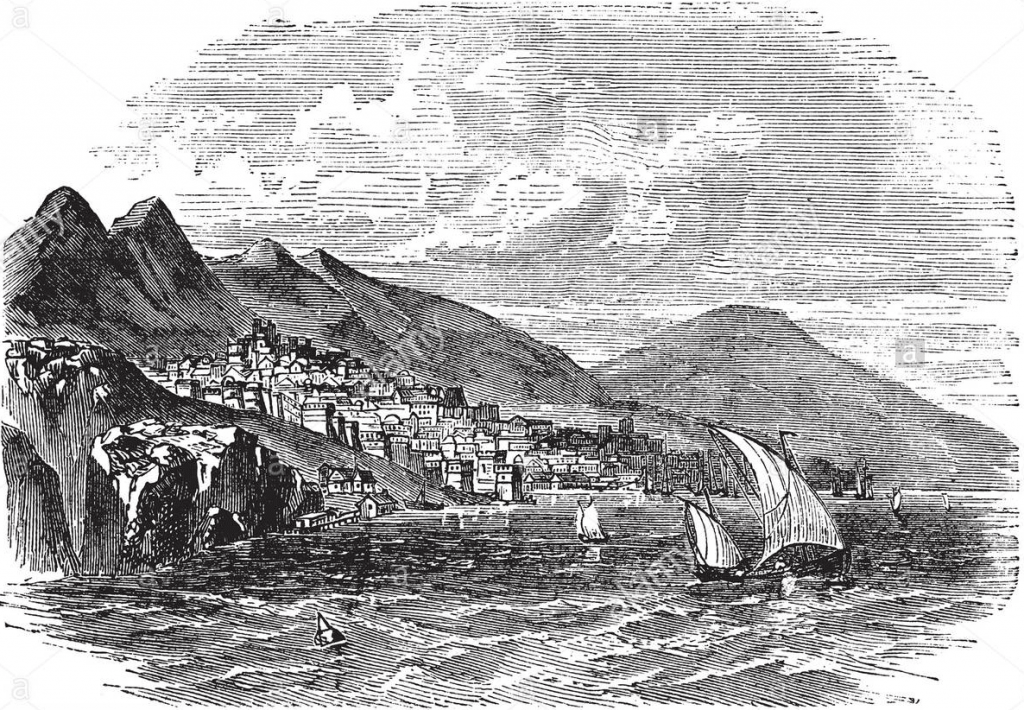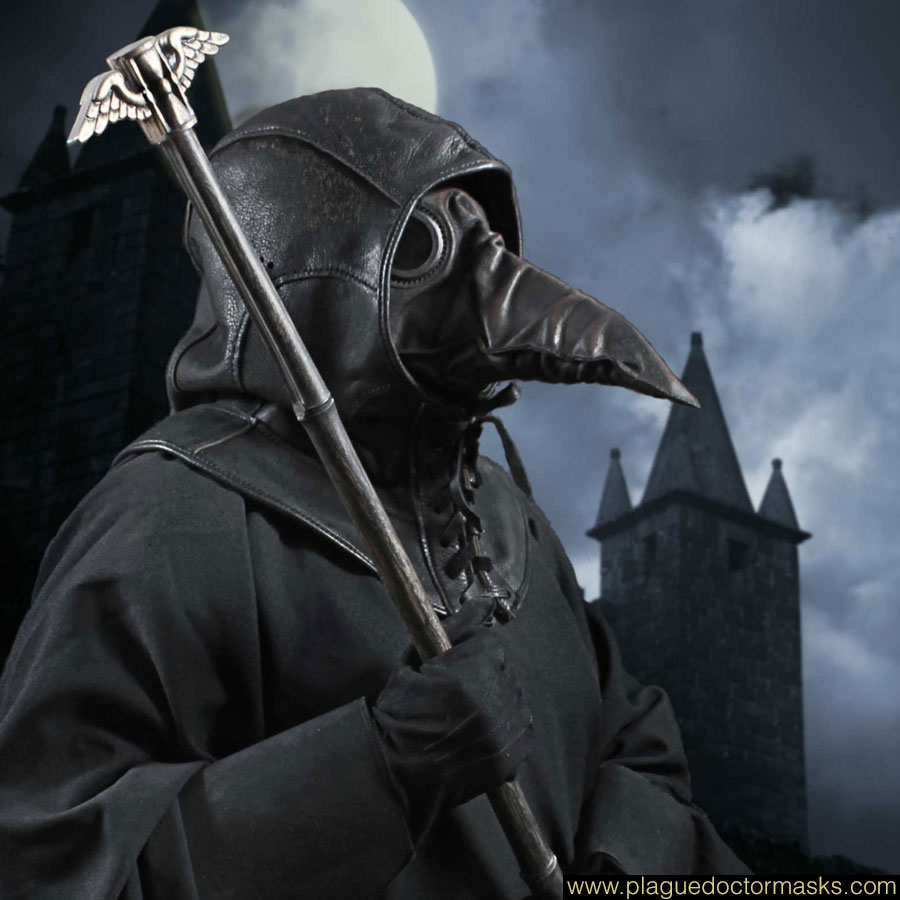October 1, 2020
Black Death (bubonic plague) facts, origin, cure and history
Entire cities decimated. Bodies piling up on the streets. And rats. Lots of rats.The disease that devastated Medieval Europe left millions of people dead and left us with a scary question: What would happen if the Black Death spread around the world again?
What if I told you that a single bacteria was responsible for the death of around 20 million people in just six years?
Origin of the 14th-Century Pandemic
It’s the year 1346. The residents of Caffa (now Feodosija, Ukraine) wake up to a thunderous noise and realize the town is completely surrounded by the evil Tartar warriors. With no army for a head-to-head battle, they don’t have a choice but to resist even knowing it’s just a matter of time before the town falls. Everything changes when something unexpected happens. A mysterious disease begins to devastate the invading army. As the days go by more and more Tartar soldiers die around the wall. But the town’s luck begins to change when the invaders start deploying one of the first biological weapons in history. Using catapults, they start throwing rotten corpses into the town. This makes the mysterious disease spread among the residents increasing the number of victims even more. Their desperation is such that many decide to abandon the town, leaving on ships bound for Italy. What they don’t know is that the ships aren’t taking only fugitives. The disease is also on board. Thus the famous Black Death managed to spread across Europe causing millions of deaths along its way.

How the Middle Ages really were?
When I think about the Middle Ages the first thing that comes to my mind… are the castles. These structures are the symbols of the Middle Ages. But at the same time the story of that period goes way beyond towers kings and princesses. Actually those were extremely troubled times.
The Middle Ages began in the 5th century and ended only in the 15th century. In other words they lasted around 1,000 years. And the story I told about Caffa took place during the second period of the Middle Ages, the Late Middle Ages, which started around the year 1000 a time when many things changed in Europe.
Historians even compare what happened during that time with the Four Horsemen of the Apocalypse from the Bible. The first rider represents famine. In the early 14th century climate change turned winter colder and made summer rainier for some years. This made food production in Europe decrease a lot. It was the Great Famine. People didn’t have any food and 10% to 25% of the continent’s population was eradicated. The second rider represents war. In that period the famous Hundred Years’ War happened. For over a century thousands of soldiers from France and England killed each other day by day to see who would occupy the French throne. The third rider was plague. Or more precisely the Black Death. During that time it killed over 20 million people. And who was the last rider of the Apocalypse? Death, which can be interpreted as the result of wars, famine, and the plague itself.
This was one of the most tense periods in history with poverty war and political intrigue. Living in a world like that is far from being an epic and romantic adventure. It looked more like an endless nightmare. Life in that period was extremely hard. Most of the time the servants lived in shacks with one single humid dark room where they slept and stored food and animals. Entire families slept huddled on straw mattresses to get warm during winter. Those people used to wake up at daybreak and work nonstop until nightfall. That also applied to children who would start working at around the age of five. In cities between narrow and dark alleys life was even more chaotic. There was no sewage everything was filthy and people would walk and eat alongside garbage human waste and even dead animals. Food was basically bread and soup made of vegetables and bones because meat and cheese were too expensive for commoners who might have no choice but to eat rotten food. There wasn’t any concern for cleanliness or health. People ate with filthy hands didn’t have oral hygiene and basically didn’t shower. For many people it was normal to wear the same underwear every day for years.

But what was the Black Death exactly?
The Black Death was an epidemic of bubonic plague that spread incredibly fast throughout Europe. Scientists believe that from 1347 to 1352 the disease killed from 15 to 23 million Europeans. It was the most brutal period of the disease that possibly killed from 75 to 200 million people. At that time the world population was around 365 million people. This number had been increasing since the beginning of mankind but one of the first times it decreased was due to the plague.
The Yersinia pestis
The Yersinia pestis, an evolution of the bacteria Yersinia pseudotuberculosis, that due to mutations over thousands of years, ended up transforming. This bacteria causes an infection and its most common form is the bubonic plague. The symptoms are one of the reasons why the disease is so scary. As soon as the infection settles in the body there’s fever, chills, weakness, and headache. As the bacteria settles in other parts of the body, the suffering intensifies with the appearance of bulges, especially on the neck, armpits, and groin, which can grow to the size of an apple, before bursting into a pus-filled wound. These swollen lymph nodes, also known as buboes, are so distinctive that people named the disease after them.
Lymph nodes are small defense organs spread throughout people’s bodies. When a foreign body is detected, they start producing antibodies to attack it. And the bubonic plague is named after the lymph nodes. If someone contracts the disease, the lymph nodes, usually located on the neck, armpits, and groin, start swelling and become visible. People call the swelling “bulges” or “buboes.” So it was named the bubonic plague.
The disease can manifest itself in other ways too. Like the pneumonic plague, which affects the respiratory system. And the septicemic plague, in which the bacteria affects the bloodstream.
Why is it called Black Death?
This term was used in the Middle Ages because of another symptom. Many people developed wounds, and the extremities of their bodies, like feet and hands, gangrened. The skin would blacken and literally die. So it was named the Black Plague or the Black Death.
Why is this disease so different from others?
Because it’s really aggressive and can kill in a few days. But the most interesting thing is how it spread super quickly. The bacteria that causes the bubonic plague likes to live inside wild rodent fleas. Since Asia suffered severe flooding in the early 14th century, these rodents, full of infected fleas, had to leave their homes and came into close contact with black rats, which used to live near people. Black rats would breed very easily, and even lived in merchant caravans and ships.
Since trade in Asia was really intense, the bacteria spread out through the continent. A single flea bite was enough to infect someone. European travelers were always crossing Asian trade routes, especially the famous Silk Road. Along with riches, these caravans transported hundreds of rats with infected fleas. The same thing happened with merchant ships. That’s how the plague began to spread throughout the world.
In 346 the disease was only in Eastern Europe, but a year later, it appeared in the Mediterranean regions. Over the next five years it’d come to dominate Italy, France, Germany, England, and finally Russia.
In a sense we can say the plague was democratic. It made no distinction between rich and poor, noble and commoner. Nowadays you could imagine that the poorest people from that time were at greater risk of contracting the disease. The elite were protected inside castles, which were a symbol of power, and far from the dirt of the streets. But the nobles who lived in these castles were not immune. The castles’ strong defense and huge walls could stop enemy invasions, but they didn’t stand a chance against the plague bacteria. At that time these castles weren’t exactly hygienic role models. They were humid and dark, and had food storage rooms that were literally paradise for rats.
Did you know there’s a theory that rats aren’t the only villains here? A recent study showed rats alone wouldn’t have been enough to spread the disease across such a vast area in such a short time. So scientists ran a simulation and found out that this bacteria probably wasn’t just in rat fleas, but also in people’s head lice. This is entirely possible because with the lack of hygiene in the Middle Ages, cities were like feasts for lice, which contaminated one person after another.
Black Death in London
Actually the bubonic plague was never gone for good. There were outbreaks up to the 19th century. One of the outbreaks occurred right here in London. From 1665 to 1666, 100,000 people fell victim to the bubonic plague here. I’m talking about a quarter of the entire population of London.
Over many years London had small outbreaks of the disease due to a lack of hygiene. In the 17th century the town was surrounded by walls that kept thieves on the outside and tons of filth on the inside. So the plague struck again. There were so many deaths that cemeteries became full, and the bodies were buried in ditches. After some time, they didn’t even do that anymore, and the corpses were literally abandoned on the streets.
The plague doctors
This is the clothing doctors used to walk around contaminated cities in the 17th century:

The clothing could protect the doctors because it was made of leather. The mask in the shape of a beak was full of herbs and other substances that filtered the air. They believed the disease was transmitted by the malodor (Bad Air) released by contaminated or dead people. The mere presence of these doctors was even scarier than the clothing. They were hired by the cities themselves to treat infected people. So, when they showed up somewhere, it was a sign that the place was completely contaminated, with thousands of people dying. That’s why nobody wanted to see those doctors. Everybody knew that wherever they were, death was near.
Actually in most cases they were second-rate doctors, prohibited from practicing medicine under normal circumstances. Basically, they would go to the cities to count the dead and infected. They’d charge the families a fee and prescribe fake medicine. In other words, they’d take advantage of people’s despair to make even more money.
How Black Death was controlled and cured?
A hypothesis says that after a great number of deaths, most of the survivors were the people most resistant to the disease. Then, it was hard for the bacteria to spread. But of course, it’s just a hypothesis. The fact is that the bubonic plague has never been cured. European medicine has never developed a definitive medication that would eliminate the disease for good. People also developed habits that helped decrease the transmission rate, like using Arab hygiene techniques and simple actions, like washing your hands.
Another method to keep the plague away was by watching the ocean closely. Since ships were full of rats, people from coastal cities knew that any vessel could bring death closer to them. There was so much fear that the French determined that any ship arriving at the shore should remain isolated for 40 days before docking. All that to confirm that nobody on board was infected. That’s where the term “quarantine” came from. Seems cruel, but that was done to prevent the disease from spreading to other places.
Black Death in Eyam Village, England
There’s an interesting story about that took place in Eyam Village, England, in the 17th century. This place with only 900 residents today, was also stricken by the bubonic plague. People died here every day. Residents knew the disease was highly contagious, so they did the only thing they could do: isolate themselves on their own. Nobody could get in or out of this town. They even built a rock barrier for that purpose. But people needed to eat, so they would dip coins into vinegar, because they thought vinegar could work as a disinfectant, and they would put the coins into rocks. Residents from nearby villages would come, take the coins and leave food there. It was a kind of long-distance trade. They literally sacrificed themselves. The population of 344 residents was reduced to less than 100. Even now, if you walk around the village, you can find markers with the names of people who lost their lives to the plague.
Black Death in Brazil
As centuries went by, countless people died due to the plague in many places across the planet, including Brazil. In 1899 a ship that arrived at the Port of Santos, was full of rats that brought the bubonic plague to the Brazilian territory. The disease began to spread, and eventually reached Rio de Janeiro, which was the Brazilian capital at the time. The epidemic claimed hundreds of victims, but the most affected were the port area residents and warehouse workers. In other words, the poorest people in the city.
Things started to change in 1904. To fight epidemics of bubonic plague, smallpox, and yellow fever, the government started an authoritarian campaign that led to an uprising known as the Vaccine Revolt. But at least their actions to improve sewage treatment ended up helping to control the bubonic plague in the former Brazilian capital.
The last reported case of the plague in Brazil was in 2005. The disease is still around, but we already have ways to deal with it. Science can identify the bubonic plague in its early stages. So, it’s easier to treat it by taking antibiotics.
Black Death today
The Black Death was controlled, but not completely eradicated. Since the bacteria lives in wild rodents, we can’t eradicate the disease. We still have reported cases of the bubonic plague to this day. From 2010 to 2015 there were a little over 3,000 cases which caused around 500 deaths. The numbers are low compared to that time. But yes the disease is still out there. And if the disease is around, an epidemic is still possible, for many reasons. First of all, scientists believe that global warming could interfere in the dynamic of the plague transmission, since an ecological imbalance could create an unpredictable scenario, like the Asian floods at the beginning of the 14th century. Besides, Yersinia pestis is still undergoing mutations and has become resistant to some antibiotics. So it continues to be a very dangerous bacteria.
Would an epidemic change the world now just like in the Middle Ages?
Black Death was one of the biggest tragedies in history. However, we can’t deny it increased our knowledge in many areas. After the epidemic, the way society of the time considered medicine, for example, changed completely. The importance of surgeons became even more evident, and hospitals gained a new importance. These places that basically served as guesthouses for travelers, began to offer medical care, getting closer and closer to the hospitals we know today. One century after the epidemic, the Middle Ages came to an end, opening the doors to a new period in the history of mankind. Without the plague, the story could have been completely different.
Now, in 2020 we are facing a new pandemic, the coronavirus or COVID-19 pandemic, with more than 1 million deaths at the time of this writing. But that is another story and shall be told another time. Will it change our world forever?
Take care, and thanks for reading.
